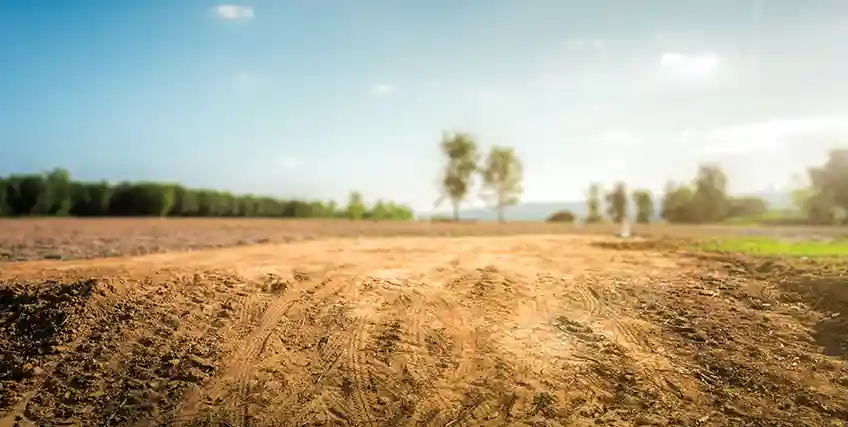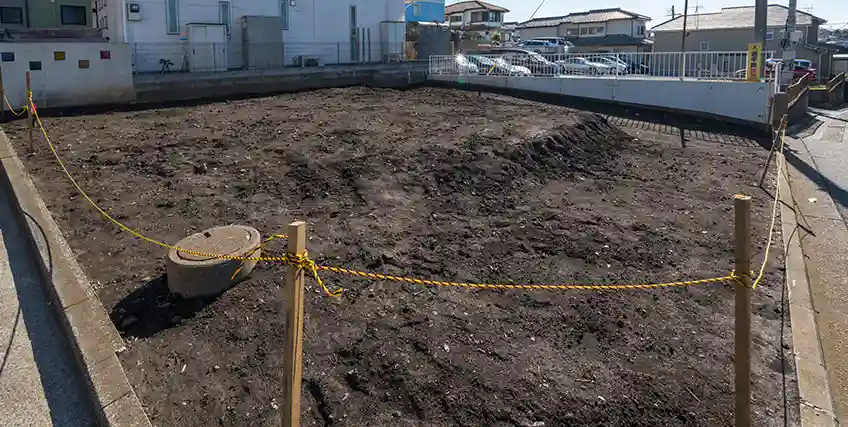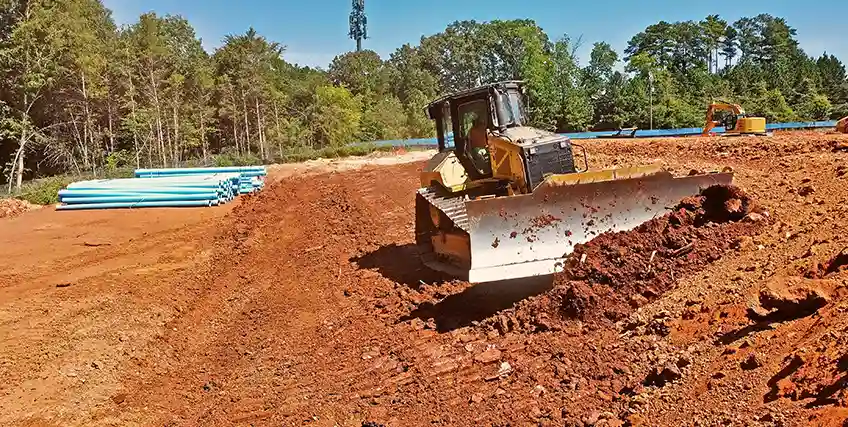How to Get a Loan for Land Acquisition: A Guide for Developers & Investors
May 26, 2025 | Last Updated on: May 26, 2025

Are you a businessman who is looking to buy a land? Then you must know that there are multiple options for you out there, from modest suburban areas to a massive 5,000-acre ranches. But the challenge you will come across with your land acquisition is business loans and finances.
You probably will not have enough funds to buy land with a regular mortgage. If you don’t have enough cash to buy a loan by making a down payment, you would have to look for land lease options or try applying for land acquisition and development loans, which is known as a lot loan or property loans.
In this article, you will learn how you can get these types of loan and how they are different from conventional mortgages. It will also help you with a guide of all the ins and outs, starting from the qualification requirements to alternative financing options, which will help you to navigate the real estate loans market.
Understanding land acquisition and development loans
Land acquisition and development loans are a type of credit that is used for purchasing a plot of land. It is generally known as a lot loan.
This loan is essential as, for many small business owners, owning a piece of loan is the first step towards building their dream home or launching a business into the market. Although funding the purchase of raw land will differ in important ways from getting a traditional mortgage.
Whether you're looking to buy a plot for a future home, start a farm, or make a long-term investment, understanding how land loans work is crucial.
In case you are in search of land to build your home, making long-term investments, or starting a farm, it is necessary for you to understand the working of this loan.
Working of acquisition & development loans
Land acquisition and development loans work like a standard mortgage. If you are approved for this type of loan, your lender will provide you with funds for buying your chosen lot of land. Once you have got the acquisition loan you will have to repay the loan over the duration of years with interest rate on the same.
However, qualifying for a land loan can be trickier than a regular mortgage to purchase land, as it is riskier for the lenders. This will result in borrowers having to show that they have a good credit score and explain their use of land in detail to start their land development project.
Borrowers should also try highlighting the aspects of their property which is required to be checked, such as zoning, surveyed boundaries, access to utilities, and land use restrictions. These factors give an idea to the lenders on the risk attached with the loan amount, even as you try assuaging any kind of financial institution’s concerns.
Once these along with other factors are considered, the rates and other land loan terms can be issued. The interest rate of land acquisition and development loans is usually higher than the standard mortgage interest rates. If you have a good credit score and a low debt-to-income ratio, it will help you in lowering the cost.
Land Fundamentals
Land presents several upfront challenges, especially unclear raw plots. To ensure you can utilize the land as you intend, research the following items and adjust your plans, if necessary.
Boundaries
First, it is essential to be clear about the potential purchase. Surveyors must mark the boundaries and have everything on paper ready to be presented to the lender. Another essential detail is to double-check zoning and land use restrictions.
Future zoning
It is always wise to check with the local planning department to determine what is the future of the immediate neighborhood. A new park that will be developed in the street can raise the value of commercial property in the future if your land acquisition and development loans are a success. But if there is a highway or a sewage development plan, it is less likely for it to develop.
Access
Easy access to utilities is a major factor for residential lots, which includes electricity, water, cable hookups, and sewer, which can save hassle, time, and money. Likewise, access to public road is also important when deciding a construction project, or the buyer would have to secure a permanent easement for accessing a public road, in case one is not available to them.
Planned uses of land
Lenders generally do not like taking risks, as buying land with acquisition and development loan rates can be a very risky endeavor. How are you planning to use the land as development financing and how will it affect the lenders assess the risk of your loan. Some lenders can also offer three-to-five years of loan for development process with the greater risk they perceive.
Build immediately
Land acquisition and development loans tend to involve more complexity than financing an existing property. This is primarily because the intended use of the land directly affects the lender’s risk exposure. Unlike a completed home, undeveloped land doesn't offer immediate, tangible collateral, making it a higher-risk asset from the lender’s perspective.
That said, land slated for immediate development generally carries less risk than land that will be developed later. The longer the timeline, the greater the chance that unforeseen issues, such as zoning changes, environmental restrictions, or market shifts, could delay or derail the project.
To manage this risk, lenders follow guidance from regulatory bodies like the Federal Deposit Insurance Corporation (FDIC), which outlines loan-to-value (LTV) ratios for different types of real estate financing. While each lender sets its internal terms, it must remain within these federal parameters.
Ultimately, securing land acquisition and development loans demands careful planning and a strong case for how and when the land will be improved, as this can significantly influence both loan approval and terms.
Speculative investments
Raw land with no immediate plans for development is typically classified as a speculative investment. Investors purchase such land hoping that future infrastructure projects, like a new freeway, will increase its value. For example, buying land near a planned highway could pay off if, once completed, the area becomes attractive to a developer looking to build a subdivision with convenient city access. The investor could then sell the land at a profit.
However, speculative land carries more uncertainty and risk than land with a clear development plan, so lenders apply stricter requirements. While the Federal Deposit Insurance Corporation (FDIC) sets a maximum loan-to-value (LTV) ratio of 65% for this type of land, lenders often require larger down payments, sometimes well above 35%, to offset the risk. Without tangible development plans, securing financing for speculative land is more challenging and typically comes with less favorable loan terms.
Improvements required
There are some land which may not be ready to be developed as per project costs. This might me known during the time of purchase or will be discover later. You should keep in mind while taking a land acquisition and development loans, that more risk is associated with plans that requires improvement. This is because real estate development and additional uncertainties can lead to escalating prices and related issues.
Final thoughts
Land acquisition and development loans offer a valuable financing solution for entrepreneurs and investors looking to purchase and develop land. However, these loans come with more stringent requirements and higher risks than traditional mortgages.
Understanding key factors such as zoning, utilities, access, and intended land use is crucial to secure favorable loan terms. Whether planning immediate construction or a long-term investment, thorough preparation and a solid financial strategy will increase your chances of loan approval. By carefully navigating the process, you can turn raw land into a profitable asset supporting your business goals.
FAQs about land acquisition and development loans
What is a land development loan?
Financial assistance tailored to support various farm development activities that help boost farmers’ income. The nonprofit initiative provides flexible loan options designed to meet the diverse needs of agricultural growth. These loans can be used for essential improvements such as land reclamation, soil enhancement, and various on-farm development projects. Whether you’re looking to improve soil health, upgrade irrigation systems, or make your land more productive, our financing solutions are here to empower farmers and promote sustainable agricultural practices.
What is an RTL loan?
A Residential Transition Loan (RTL) offers short-term, flexible financing for real estate investors. Ideal for flips, new builds, or bridge needs, RTLs provide faster access than traditional mortgages. Often used with lines of credit, they help investors act quickly and efficiently in fast-moving property markets.
What is the loan given by Land Development Bank?
A Residential Transition Loan (RTL) provides short-term, flexible financing tailored for real estate investors. Perfect for flips, new construction, or bridging gaps, RTLs offer quicker access than traditional mortgages. By supporting cash flow needs, these loans enable investors to move swiftly and manage projects efficiently in dynamic markets.
Which loan is best for buying land?
A plot loan, often referred to as a land loan or plot purchase loan, is a type of financing offered by banks and NBFCs to individuals or businesses for land acquisition. These loans are essential for purchasing plots and can serve as a foundation for future development loans.
What is a land development loan?
A land development loan is a short-term financing option that supports both land acquisition and the preparation of raw land for construction or sale. These loans help developers with essential tasks such as clearing, leveling, installing infrastructure like roads and utilities, and revitalizing abandoned or brownfield sites.




